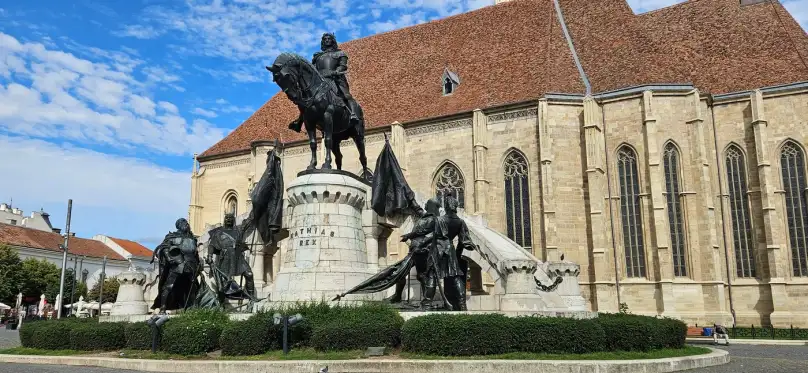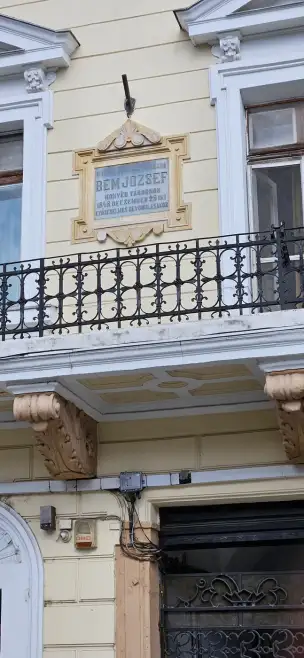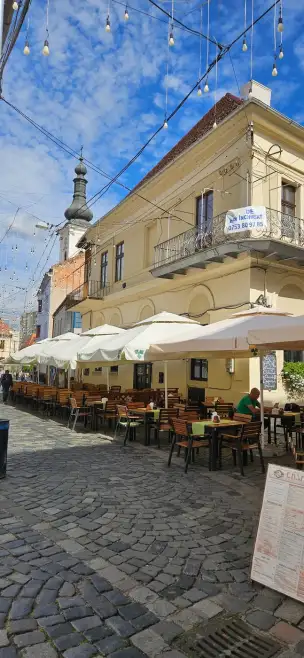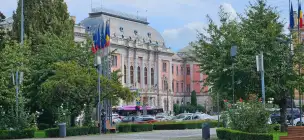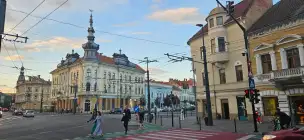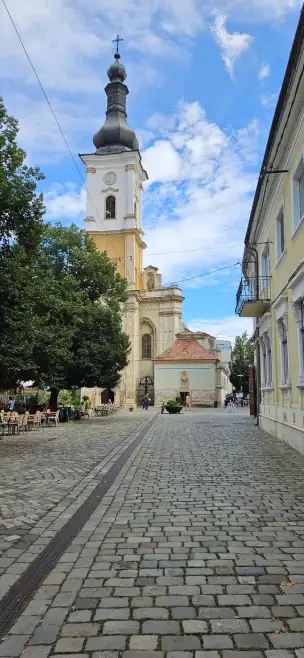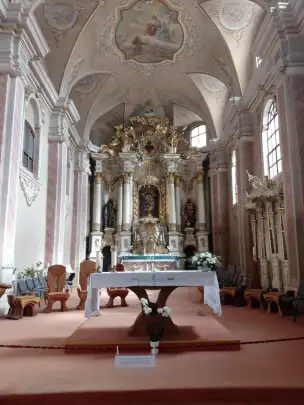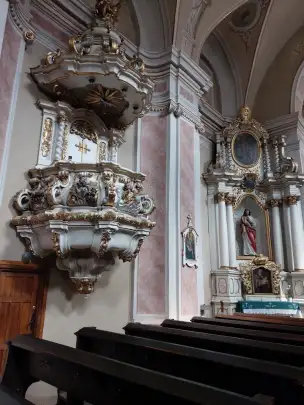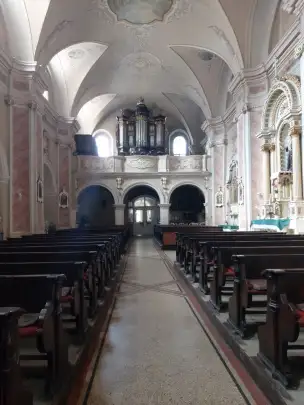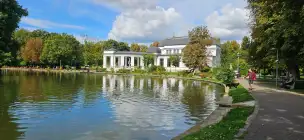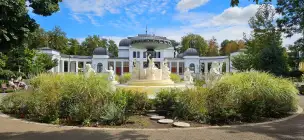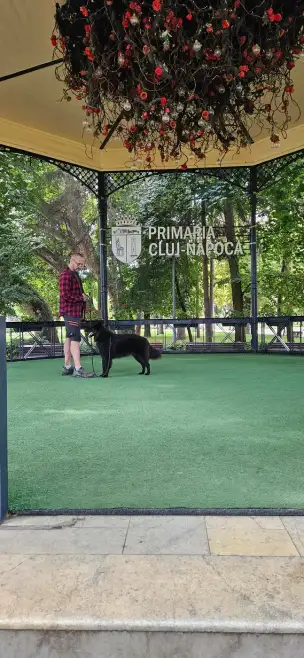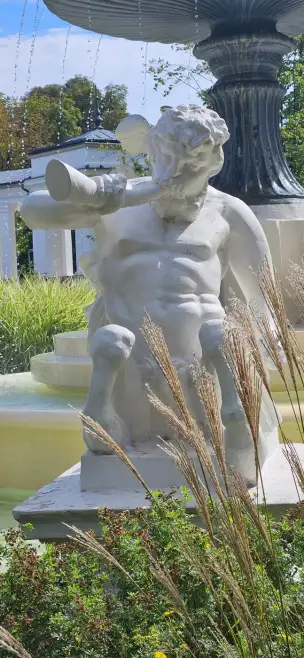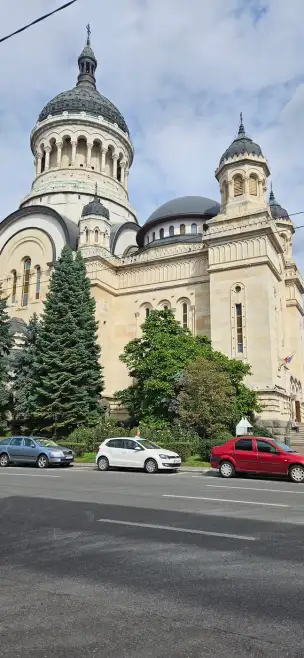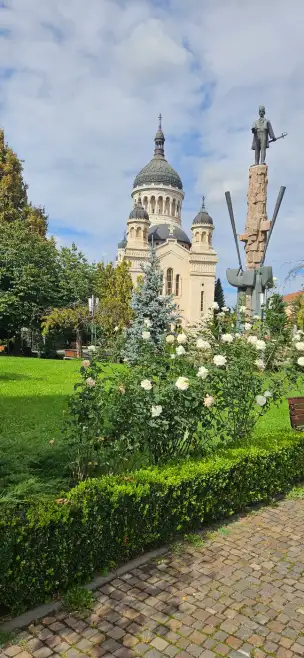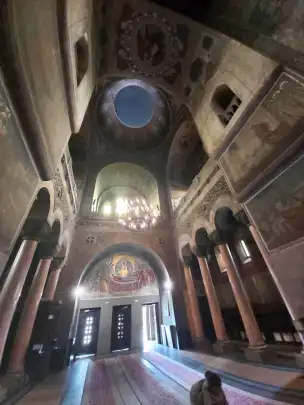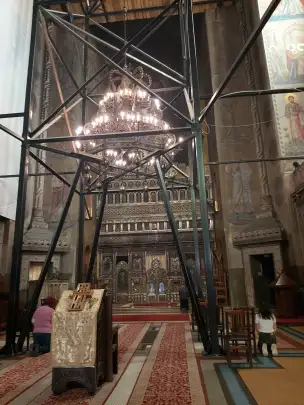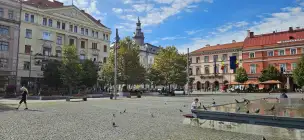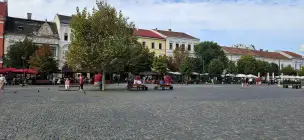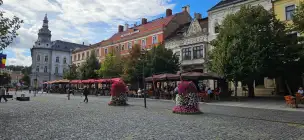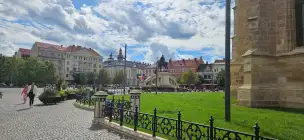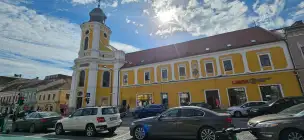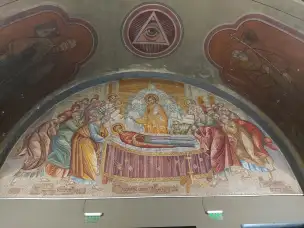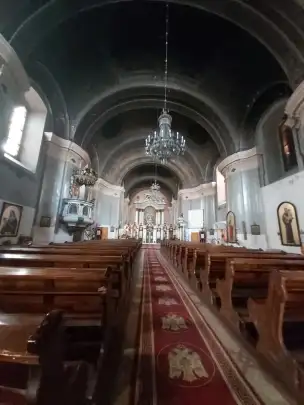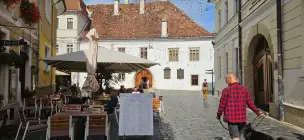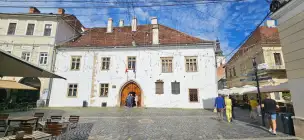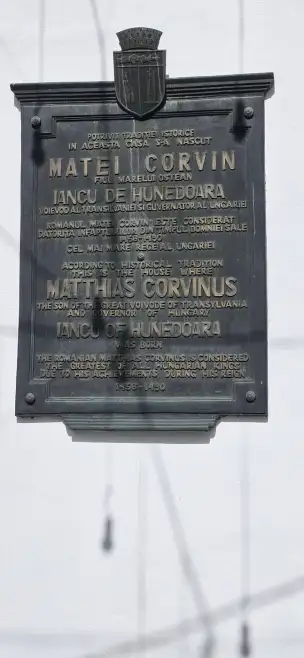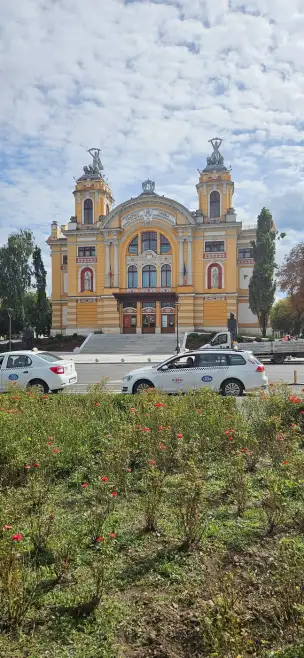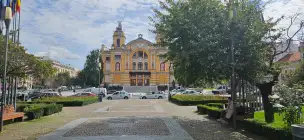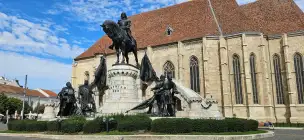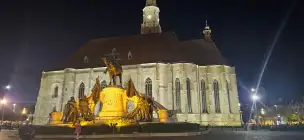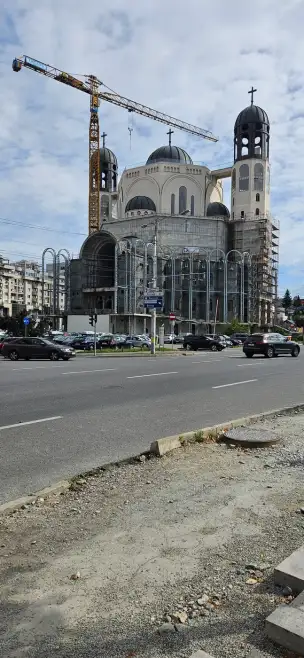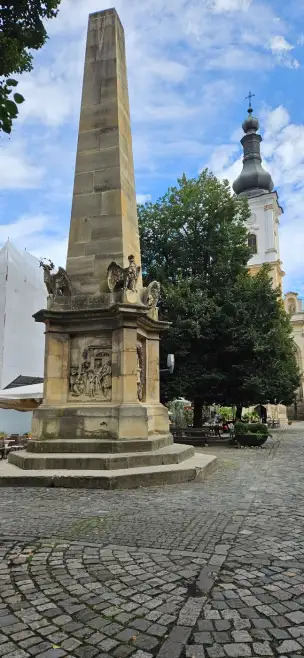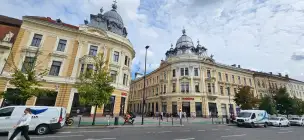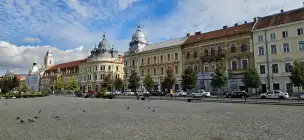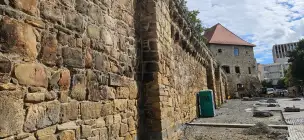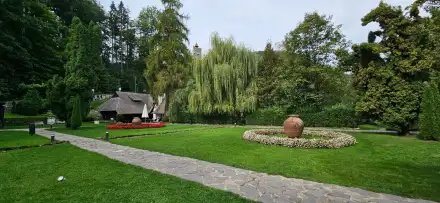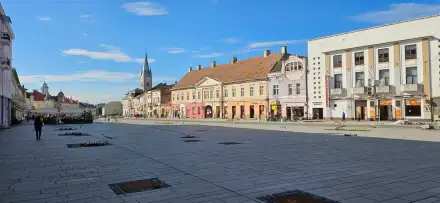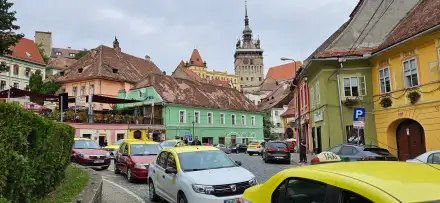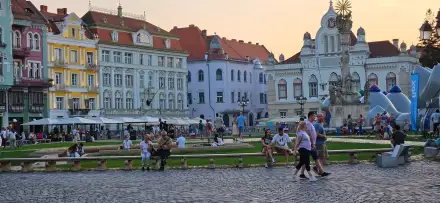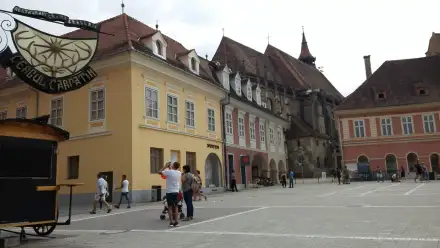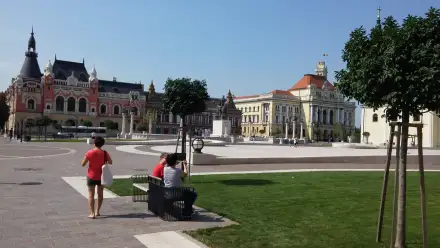One of the largest cities and an important cultural and academic center in Romania.
Armed with what we had heard from others, we expected Cluj to be somewhat like Kraków, but what we found was a city more comparable—at best—to Lublin.
Like Kraków, Cluj-Napoca is a major university hub, so its cultural and gastronomic offerings are rich, but that’s where the similarities end.
Although the city is the birthplace of King Matthias Corvinus, it was never the political or administrative center of Transylvania. Cluj was an important cultural and religious hub, and this is reflected in its character. You won’t find here monumental symbols of power like Wawel, Hradčany, or Buda. To make up for this, the Hungarians erected a large statue of Matthias Corvinus in front of the cathedral, while the Romanians placed a modest Capitoline Wolf along Eroilor Boulevard.
Despite these differences, there is still something—subtle and hard to define at first glance—that makes Cluj resemble not so much Kraków as any other city in our part of Europe. I had to think for a moment to figure out why I felt closer to home here. The reason is that Cluj lacks the low-voltage overhead power lines that clutter the urban landscape in many Romanian cities. Thanks to this, the city looks tidy and elegant.
Parking in downtown Cluj
This is a nightmare, especially if you are staying at a hotel in the very heart of the city. It’s amazing: I’ve driven in Budapest, Naples, and Barcelona, yet I never would have guessed that Cluj-Napoca would be the one to defeat me… We circled the streets for about 40 minutes before I finally gave up.
There is only one paid parking lot in the city center—beneath St. Michael’s Cathedral—and the price is staggering. For less than 24 hours we paid around 350 PLN. To make matters worse, payment is only possible with banknotes of up to 10 lei, so you also have to run around the shops to get change.
Is Cluj worth visiting?
Yes—but if you’re driving there, make sure you have a parking spot arranged in advance. In other words, don’t try to squeeze into the very center of the city.
Discover the best flights to Romania See current prices and promotions.
Check flights to Romania
The city is full of beautiful architectural landmarks, including Gothic, Baroque, and Art Nouveau buildings. One of the most important monuments is St. Michael’s Cathedral, an impressive Gothic church with a tower 76 meters high.
The city is home to many companies, especially in the technology and IT sectors. It serves as a hub for the development of new technologies and innovation in the country.
Throughout its history, Cluj has been under the rule of various cultures, including Romanian and Hungarian, which is why there are different names for the same place in different languages. Cluj [Polish: Kluź] is Kolozsvár in Hungarian, while Napoca is the Latin name used in Roman times.
St. Michael`s Cathedral in Cluj
St. Michael’s Cathedral (Romanian: Catedrala Sfântul Mihail, Hungarian: Szent Mihály-templom) in Cluj-Napoca is one of the most important and beautiful churches in Romania. Construction began in the 14th century and was completed in the 15th century. It is one of the most significant examples of Gothic architecture in the Transylvanian region. Over the centuries, the cathedral has undergone many changes and renovations, which have influenced its appearance and style.
Several sessions of the Transylvanian Diet were held in this church, and titular enthronements were conducted here for princes such as Sigismund Báthory, Sigismund Rákóczi, Gabriel Báthory, and Gabriel Bethlen.
The church’s bell tower was built in the Gothic style and, together with the cross at its peak, reaches a height of 80 meters.
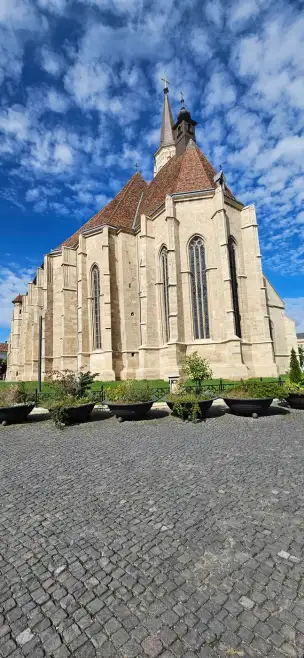
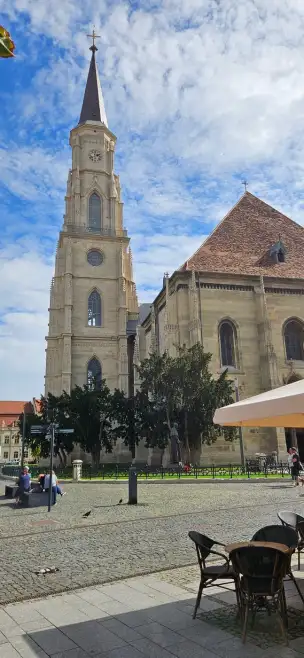
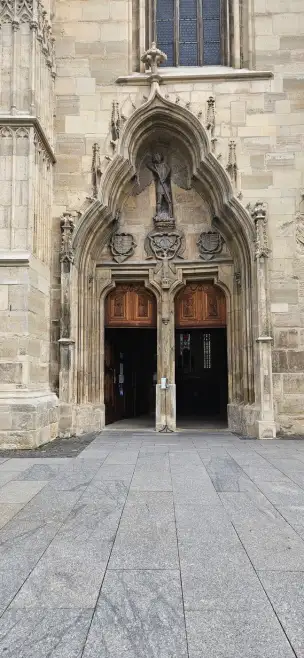
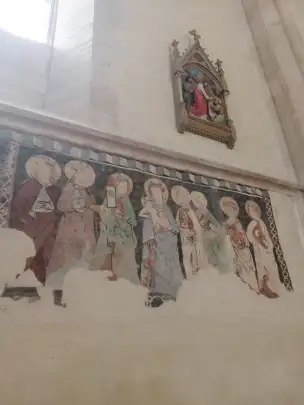
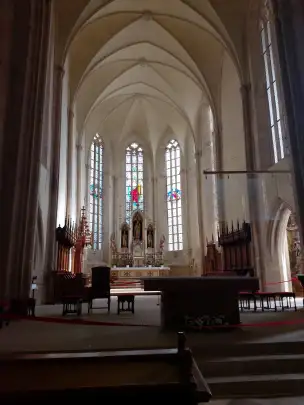
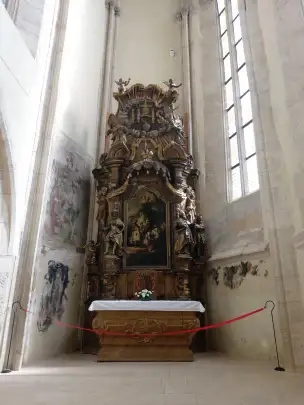
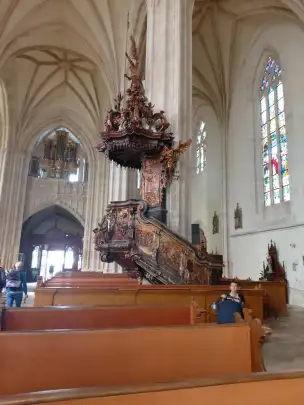
Franciscan Church in Cluj
The first Roman Catholic church in Cluj was built in the 11th–12th century but was destroyed during the Tatar invasion in 1241. In the 13th century, a late Romanesque church was erected on its site, later rebuilt in the 15th century in the Gothic style. From 1609, the building was given to the Calvinists. In 1728, the Franciscans returned to Cluj and carried out another reconstruction, this time in the Baroque style.
Parcul Central
Founded in 1827, the park is one of the oldest urban parks in Romania. Its name, Parcul Central Simion Bărnuțiu, was given in honor of Simion Bărnuțiu, a Romanian lawyer and social activist.
Dormition of the Mother of God Cathedral in Cluj-Napoca
Construction of the cathedral began in 1923 and lasted until 1933. Built in the Neo-Byzantine style, it is one of the most important examples of this architectural style in Romania.
Piața Unirii
This was the core of medieval Cluj, centered around the parish church of St. Michael. The square is one of the largest (about 220 m by 160 m) historical marketplaces in Central and Southeastern Europe. Historically, it was Cluj’s second square, after Piaţa Mică (now Piaţa a Muzeului), and in the Middle Ages it was known as Piaţa Mare. After 1918, it was renamed Piaţa Unirii, a name it retains to this day. In the center of the square stand St. Michael’s Church and the statue of Matthias Corvinus.
Greek Catholic Cathedral of the Transfiguration
The Cathedral of the Transfiguration was built between 1775 and 1779. It is one of the oldest and most important Greek Catholic churches in the Transylvanian region.
The cathedral is an example of Baroque architecture, featuring a beautiful façade and ornate interior. Its design reflects the architectural traditions of that era.
Inside, the cathedral is richly decorated with numerous icons, frescoes, and sculptures, typical of the Greek Catholic tradition. It serves as a place of prayer and worship for Greek Catholic faithful.
Matthias Corvinus House
A site of great historical importance, as Matthias Corvinus was one of Hungary’s most significant kings, and his reign marked a period of great cultural and artistic development in the country. Today, the building houses the university library.
Romanian National Opera in Cluj-Napoca
Built between 1904 and 1906 by the famous Austrian architects Ferdinand Fellner and Hermann Helmer—who, at the turn of the 20th century, designed several theaters and palaces across Europe, including those in Iași, Oradea, Timișoara, and Chernivtsi.
The building was inaugurated on September 8, 1906, and until 1919, when Cluj became part of the Kingdom of Romania, it served as the home of the local Hungarian National Theatre.
Matthias Corvinus Monument
Designed by János Fadrusz and unveiled in 1902, it depicts Matthias Corvinus. It is listed in Romania’s National Register of Historic Monuments. After the bronze sculpture was cast in a foundry, another plaster model was made and sent to the Paris World’s Fair, where it was awarded the Grand Prix, the highest honor at the exposition.
Greek Catholic Cathedral of the Martyrs and Confessors of the 20th Century in Cluj-Napoca
Construction of the cathedral began in 1993 but was halted in 2000 due to a lack of funds, as well as modifications to the original design, since the church had initially been far too tall. After the changes, the new appearance of the cathedral became much closer to the Byzantine style characteristic of the Greek Catholic Church.
Carolina Obelisk
In 1817, Austrian Empress Carolina Augusta, together with her husband, Emperor Francis I, visited Cluj with the aim of strengthening the loyalty of subjects in this part of the empire. Following this visit, the residents of Cluj initiated a project to build a monument commemorating the occasion.
The obelisk is 10 meters tall, and three of its sides feature bas-reliefs depicting aspects of the imperial visit.
It is the first secular monument in Cluj, as all others built in the city up to that time had a religious character.
Royal Houses at Piața Unirii
These are historic buildings located on the eastern side of the Main Square (Piața Unirii) in Cluj-Napoca. They are listed as historic monuments in Romania.
The name derives from the fact that these buildings once belonged to the Roman Catholic state of Transylvania. The term “Royal Houses” is also used for other townhouses in the area of the Promenade Square, which were likewise built by Catholics.
Tailors Bastion in Cluj-Napoca
The Tailors’ Tower (Bastionul Croitorilor) is located in the southeastern corner of the old citadel of Cluj-Napoca.
It was built in the 15th century and rebuilt between 1627 and 1629, taking on its current form.
The name comes from the Guild of Tailors, which was responsible for guarding and maintaining this part of the city.



